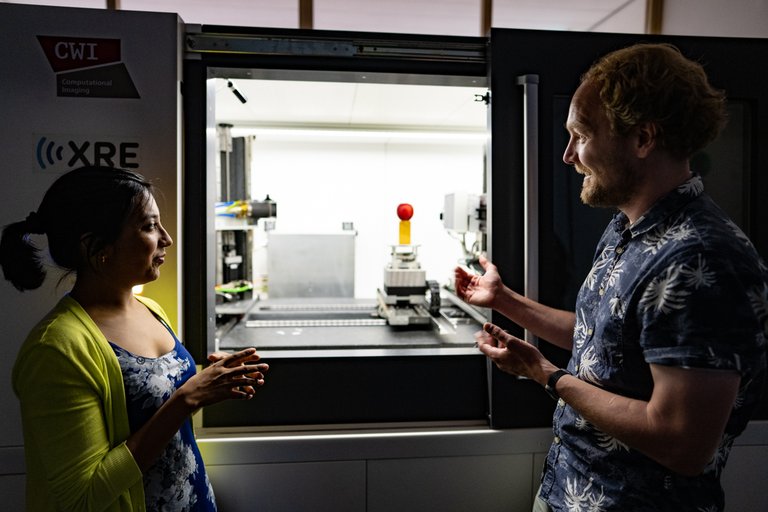Treating patients with cancer faster and more effectively using the latest minimally invasive techniques. And at the same time relieve the continuing pressure on the healthcare industry. That's what IMAGINE is striving for. NWO (Netherlands Organization for Scientific Research), public and private partners are investing a total of 54 million euros in this world-leading innovation lab for image-guided interventions. This will significantly improve the lives of and care for people with cancer. The computational imaging group at CWI will contribute to IMAGINE with the development of faster and more accurate medical imaging methods using advanced mathematical and computational methods.
Medical imaging and image-guided interventions are playing an increasingly important role in the treatment of cancer patients. For example, the MR-Linac scanner allows much more targeted radiation therapy and fewer sessions are needed to treat prostate cancer patients, for example. Previously, people with limited-risk prostate cancer, for example, had to be irradiated 20 times, while the standard treatment now consists of five sessions with the MR-Linac.
To accelerate the realization of medtech inventions such as these but also to make them more compatible with and introduced into everyday hospital practice, the open innovation lab IMAGINE for image-guided interventions is being launched. Here, companies, research and educational institutions come together to work jointly on image-guided innovations such as the MR-Linac. This combines the latest mathematical, AI and data technologies with image-guided techniques and interventions.
Less invasive
Image-guided treatment is a method by which patients can be treated in a more targeted and less invasive manner. In fact, imaging equipment (such as MRI, CT, X-ray and ultrasound) is used to map tumors very precisely during the intervention. In this project the computational imaging group at CWI will contribute to the development of faster and more accurate medical imaging methods using advanced mathematical and computational methods.
These types of techniques allow doctors to better see what they are treating, making cancer treatments more precise and efficient. As a result, patients also suffer fewer side effects because surrounding healthy tissue is spared. Furthermore, image-guided treatments are often less stressful for patients than surgery, for example.
Nico van den Berg, professor of computational imaging at UMC Utrecht: “Medical technology is never finished, it can always be improved. A revolution is currently taking place in AI, mathematical modeling and smart sensors. By incorporating these into image-guided interventions, we can provide even more effective care with less manual intervention required from care staff; thus reducing the burden on care staff. Within IMAGINE, we are looking for cooperation with new knowledge partners who can help us with this, such as the Center for Mathematics & Computer Science (CWI) and Eindhoven University of Technology.”

